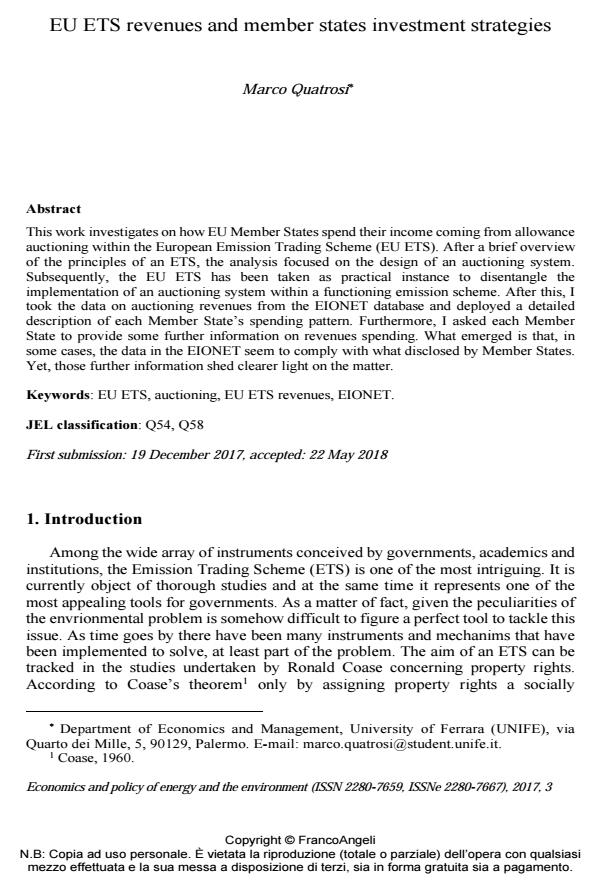EU ETS revenues and member states investment strategies
Journal title ECONOMICS AND POLICY OF ENERGY AND THE ENVIRONMENT
Author/s Marco Quatrosi
Publishing Year 2018 Issue 2017/3
Language English Pages 17 P. 41-57 File size 265 KB
DOI 10.3280/EFE2017-003003
DOI is like a bar code for intellectual property: to have more infomation
click here
Below, you can see the article first page
If you want to buy this article in PDF format, you can do it, following the instructions to buy download credits

FrancoAngeli is member of Publishers International Linking Association, Inc (PILA), a not-for-profit association which run the CrossRef service enabling links to and from online scholarly content.
This work investigates on how EU Member States spend their income coming from allowance auctioning within the European Emission Trading Scheme (EU ETS). After a brief overview of the principles of an ETS, the analysis focused on the design of an auctioning system. Subsequently, the EU ETS has been taken as practical instance to disentangle the implementation of an auctioning system within a functioning emission scheme. After this, I took the data on auctioning revenues from the EIONET database and deployed a detailed description of each Member State’s spending pattern. Furthermore, I asked each Member State to provide some further information on revenues spending. What emerged is that, in some cases, the data in the EIONET seem to comply with what disclosed by Member States. Yet, those further information shed clearer light on the matter..
Keywords: EU ETS, auctioning, EU ETS revenues, EIONET
Jel codes: Q54, Q58
- The European Union Emission Trading System and its role for green budgeting development — the case of EU member states Kamilla Marchewka-Bartkowiak, in Current Opinion in Environmental Sustainability 101390/2023 pp.101390
DOI: 10.1016/j.cosust.2023.101390 - Handbook of Research on Climate Change and the Sustainable Financial Sector Kamilla Marchewka-Bartkowiak, Klaudia Jarno, pp.34 (ISBN:9781799879671)
Marco Quatrosi, EU ETS revenues and member states investment strategies in "ECONOMICS AND POLICY OF ENERGY AND THE ENVIRONMENT" 3/2017, pp 41-57, DOI: 10.3280/EFE2017-003003